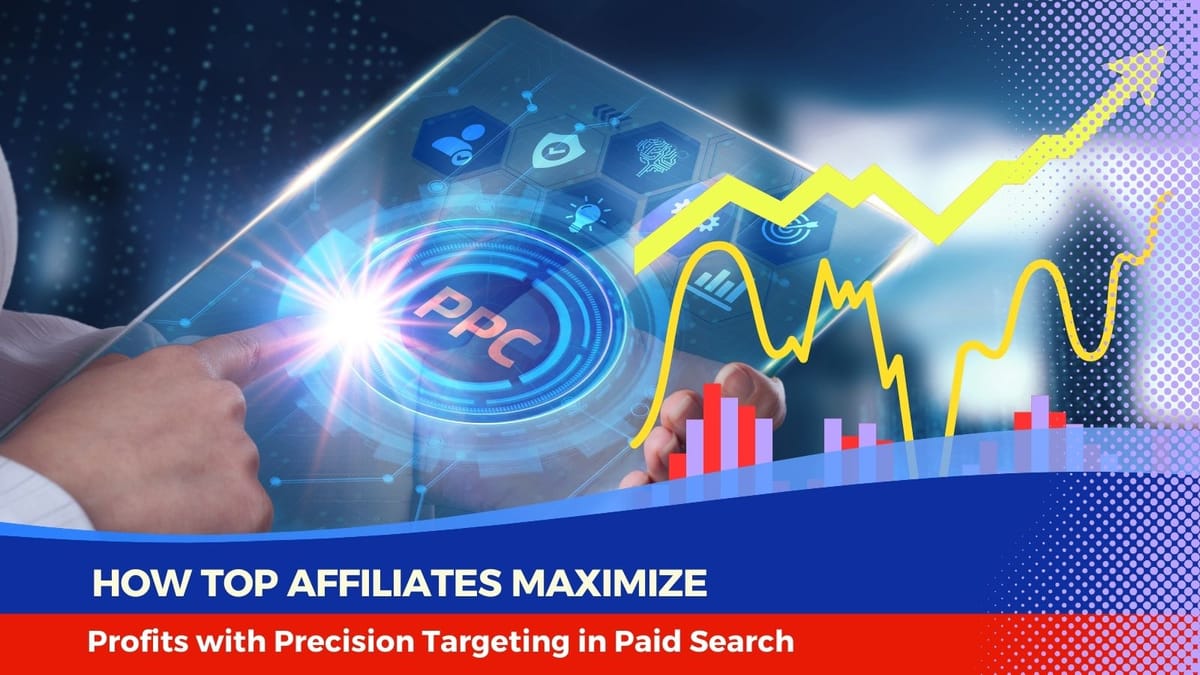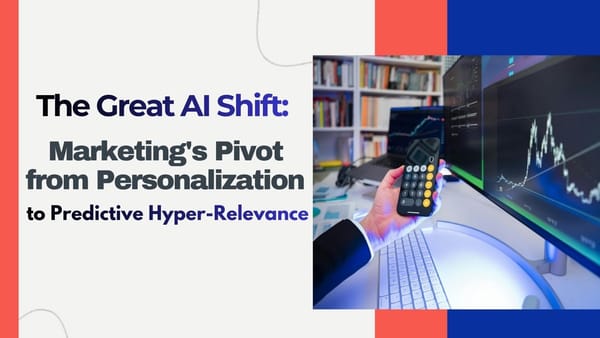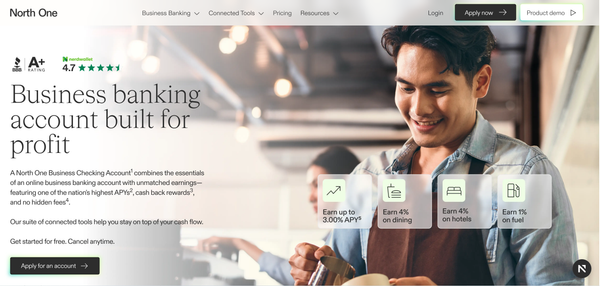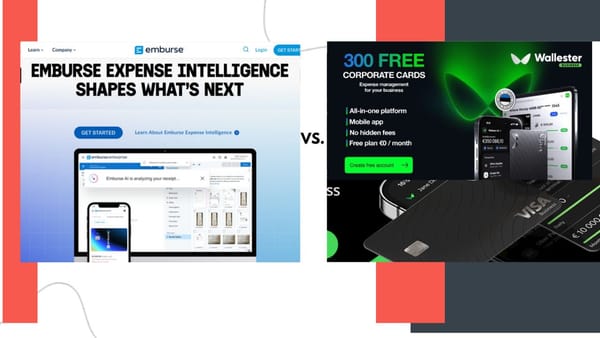How Top Affiliates Maximize Profits with Precision Targeting in Paid Search
Discover how super affiliates are using emotional storytelling and precision targeting in paid search to scale profits faster. This guide gives you the actionable steps, proven tools, and expert insights to win in affiliate marketing.

The New Era of Emotionally Intelligent Affiliate Marketing
Imagine this—you've poured hours into content, created what you thought was the perfect affiliate offer, and waited... crickets. No clicks. No sales. Just frustration.
Now flip the script.
What if you could target the right person, at the right time, with the right emotion-triggering message—and watch your profits soar?
That’s exactly what top affiliates are doing today by combining precision targeting in paid search with emotionally resonant marketing.
In a world flooded with ads, connection wins. Data-driven targeting delivers the audience, but emotional storytelling and relevance convert that traffic into loyal buyers.
This guide reveals how elite affiliates are not just running ads—they’re creating meaningful experiences that drive serious profits. Whether you’re new to paid search or scaling up, this guide will arm you with practical steps, emotional insights, and tools like Bloomclicks to take your affiliate journey to the next level.
Why Paid Search Precision Targeting Works—And Why Emotions Matter
We live in the attention economy. People don’t just buy because a product is good—they buy because it makes them feel something: confidence, happiness, security, excitement.
Now combine that with laser-targeted ads delivered exactly when someone is searching for a solution. You’ve got a formula not just for profit—but for impact.
Quick Stats That Speak Volumes:
- Paid search users have 50% higher buying intent than organic visitors.
- Emotionally connected customers are 52% more valuable over their lifetime.
- Ads that connect on an emotional level see a 23% boost in conversions.
So, what does that mean for you?
It means that when you pair paid search with emotional storytelling, you don’t just win clicks—you win hearts (and wallets).
Top Paid Search Platforms Affiliates Are Dominating With
Let’s dive into the top three platforms where today’s high-earning affiliates are scaling their income. These platforms are not just tools—they’re arenas where precise targeting and emotional messaging collide for powerful results.
Google Ads: The Powerhouse of Precision
Google Ads is the titan of paid search. It gives affiliates access to billions of daily search queries—with intent that’s ready to buy.
How to Win on Google Ads:
- Create Your Ad Account – Choose “Sales” or “Website Traffic” as your objective.
- Use Emotional Keywords – Target phrases like “best gift for new moms” or “how to stop hair loss fast.”
- Design Ads That Speak to Pain or Desire – Your headline should spark curiosity or relief: “Feel confident again—try this natural hair growth solution.”
- Use Ad Extensions – Add urgency (“Limited-time offer”) and social proof (“Over 10,000 happy users!”).
- Set a Modest Budget and Scale – Begin small ($10/day), monitor results, then double down.
💡 Pro Insight: Long-tail keywords like “best running shoes for knee pain” often have 3-5x higher conversion rates due to their specificity and emotional intent.
Microsoft Advertising (Bing Ads): The Underdog That Overperforms
Bing Ads may fly under the radar, but smart affiliates are quietly raking in profits here thanks to lower CPCs and an older, wealthier demographic.
Why Affiliates Love Bing:
- Less competition means more impressions for less money.
- It's ideal for niches like finance, health, and home improvement.
- Allows LinkedIn audience targeting for precision B2B marketing.
💬 “I spent $200 on Bing Ads and made $1,400 in sales. I’ve never looked back.” – A real Bloomclicks super affiliate
Facebook Ads: Precision + Emotion at Scale
Facebook isn’t search-based, but it excels at interest and behavior targeting. It’s where emotion-first creatives shine brightest.
Winning Strategy for Facebook Ads:
- Use carousel ads for story-driven product showcases.
- Target emotional interests—“new moms,” “weight loss journey,” “financial freedom.”
- Deploy lookalike audiences based on email lists or pixel data.
- Include video testimonials—they build trust instantly.
🎯 Combine Facebook Ads with retargeting to follow users across platforms and close more sales.
Precision Targeting Strategies That Convert Like Magic
Top affiliates know that strategy beats brute force. Here’s how they fine-tune their campaigns to work smarter and profit bigger.
Advanced Keyword Segmentation
- Short-tail keywords for volume: “home gym”
- Long-tail keywords for intent: “affordable home gym for small apartment”
- Use negative keywords to block irrelevant traffic.
Geo-Targeting
- Hyper-local campaigns work wonders: “NYC vegan meal delivery”
- International targeting? Use local language ads and pages.
💥 “We geo-targeted Italy and tripled ROI overnight.” – Bloomclicks Affiliate Partner
Demographic Targeting
- Focus on age, gender, income, and device type.
- Tailor creative to demographic behaviours (e.g., mobile users prefer shorter content).
Retargeting with Emotion
Ever browsed something and seen the same product 10 times? That’s retargeting—and it works.
Pair it with emotion:
- “Still thinking about this offer? Let’s make it easier.”
- “Only 24 hours left to grab your perfect fit.”
How Bloomclicks Empowers Affiliates with Real Results
Meet Bloomclicks, the secret weapon for elite affiliates and publishers.
Get StartedWhat Makes Bloomclicks Different?
- Campaign Variety – Run offers in finance, wellness, tech, home improvement, and more.
- High-Converting Traffic – Only the most reliable traffic sources are used.
- CPC, CPA, CPL, CPS, CPI, and Hybrid options – Choose what works best for your funnel.
- Advanced Real-Time Analytics – Know what's working and scale fast.
🌟 "Using Bloomclicks, I turned a $500 test budget into $4,000 in commissions within a month." – Ashish
💥 Sign up for Bloomclicks now and unlock the campaigns that are fueling global affiliate growth: Bloomclicks.com
From Beginner to Pro: Tailored Playbooks for Every Stage
If You’re Just Starting Out:
- Begin with ONE traffic platform.
- Use Bloomclicks’ beginner-friendly dashboard to pick high-performing offers.
- Track basic metrics: CTR, CPC, Conversions.
- Focus on ONE niche you genuinely care about.
If You’re Ready to Scale:
- Use automation: Facebook CBO, Google Smart Bidding.
- Build funnels: Add landing pages or pre-sell content.
- Segment audiences into hot, warm, cold and retarget accordingly.
- Use emotional hooks in every stage of the funnel.
Common Pitfalls to Avoid
🚫 Overspending on broad keywords
🚫 Ignoring landing page experience
🚫 Failing to test creatives
🚫 Not tracking source-level data
🔍 Always track where every click and conversion comes from. Data is your superpower.
Conclusion: It’s Not Just Ads—It’s Human Connection
In the end, the best affiliate marketers are part scientist, part storyteller. They use data to find the audience... and emotion to inspire action.
Whether you’re starting your journey or scaling to six figures, precision targeting in paid search is your golden ticket. And with platforms like Bloomclicks providing the right campaigns and support—you’re never alone.
So ask yourself:
Are you ready to stop guessing and start converting with purpose?
👉 Join the affiliates already thriving. Visit Bloomclicks.com today and begin building the affiliate business you deserve.
🎯 Final Thoughts
Whether you're just getting started or scaling to six-figures a month, precision targeting in paid search—when done with emotional intelligence—can unlock life-changing affiliate income.
If you're serious about scaling with ready-to-promote, high-converting PPC offers, we highly recommend Bloomclicks as your next move.
Still have questions? Drop them in the comments below or message us on social media—we love helping affiliates win.
FAQs: Get the Answers You’re Looking For
1. What is precision targeting in paid search, and why is it important for affiliates?
Precision targeting means showing your ad to the exact type of user who is most likely to convert—based on intent, behavior, demographics, and even location. For affiliates, this is a game-changer. Instead of wasting ad spend on broad traffic, you can zero in on users actively searching for a solution your offer provides.
Example: Someone searching “best home security system under $100” has a clear need and intent. Precision targeting ensures your offer appears at that moment.
2. How much should I budget to start affiliate marketing with paid search?
You can start with as little as $5 to $10 per day, especially on platforms like Facebook or Bing. The key is not how much you spend, but how smart you spend it. Begin with test campaigns, monitor your CPC (cost-per-click), CTR (click-through rate), and conversion rate. Once you see consistent ROI, scale up.
Pro Tip: Start small, test aggressively, and reinvest your profits. It’s not about going big fast—it’s about learning what works.
3. Can beginners really make money with paid search affiliate marketing?
Absolutely. Many top affiliates today started with zero experience. The trick is to focus on one niche, use proven platforms like Google Ads or Bloomclicks, and track every click. Use beginner-friendly tools and stick to offers with a high conversion history. Once you learn the system, it becomes repeatable and scalable.
4. What kind of affiliate offers work best with paid search?
Affiliate offers that solve urgent problems, have clear benefits, and fall into evergreen niches perform best with paid search. Popular verticals include:
- Health & Wellness (e.g., weight loss, skincare)
- Finance (e.g., credit repair, personal loans)
- Tech & Gadgets (e.g., VPNs, smart home devices)
- Home Improvement
- E-commerce trial offers
Use paid search for solutions people are actively searching for. The higher the pain point, the better the conversion rate.
5. What is retargeting, and how does it boost affiliate sales?
Retargeting (also known as remarketing) shows your ad to people who previously clicked but didn’t convert. It keeps your offer in front of users who already showed interest.
Why it works:
- Users often need 3–7 touches before buying.
- It builds brand familiarity and trust.
- Retargeted visitors are 70% more likely to convert.
You can set up retargeting on platforms like Facebook (using Pixel) or Google (with Tag Manager). Combine this with emotional copy to seal the deal.
6. What makes Bloomclicks different from other affiliate platforms?
Bloomclicks is built specifically for affiliates who want scalable, performance-driven campaigns without the fluff. Here’s why it stands out:
- ✅ Pre-vetted, high-converting offers across top verticals
- ✅ Advanced campaign tracking with real-time dashboards
- ✅ Multiple payment models: CPA, CPL, CPC
- ✅ Personalized support for scaling affiliates
- ✅ Exclusive access to high-EPC (Earnings Per Click) campaigns
Whether you're just starting or already earning four figures per month, Bloomclicks gives you the tools and campaigns to grow with precision.
7. What are the most common mistakes to avoid in paid search affiliate marketing?
- Targeting too broadly – Narrow your focus for better ROI.
- Ignoring landing page relevance – Align ad content with what the user expects.
- Not tracking conversions – Always know your exact cost per conversion.
- Overspending without testing – Test before you scale. Always.
- Neglecting mobile optimization – Over 70% of users click ads on mobile.
Avoiding these pitfalls can make the difference between breaking even and breaking records.
8. How do I scale my affiliate campaigns once I find a winning ad?
Scaling comes in two flavors:
- Vertical Scaling: Increase your ad budget gradually (e.g., 20% every 48 hours).
- Horizontal Scaling: Clone your winning campaign into new audiences, regions, or ad formats.
You can also use automation like Google’s Smart Bidding or Facebook’s Campaign Budget Optimization (CBO) to let the algorithm find more winners for you.
9. What’s the secret to writing emotionally resonant ad copy for affiliates?
Use a pain-problem-solution framework:
- Pain: “Tired of waking up with back pain?”
- Problem: “You’ve tried every mattress, but nothing works.”
- Solution: “This posture-correcting sleep pad is changing lives.”
Speak like a friend who cares, not a salesperson. Add urgency (“Limited offer”), scarcity (“Only 50 left”), or curiosity (“See why 10,000 users switched”).
10. Can I use paid search with social media platforms like TikTok or Instagram?
Yes—and it’s one of the fastest-growing methods in 2024. Platforms like Facebook, Instagram, and TikTok support performance-based campaigns where you can target users by behavior, interests, and location.
- Use TikTok for creative, authentic videos.
- Use Instagram Reels or Stories for visual-driven product placements.
- Combine paid social with retargeting for a full-funnel approach.





